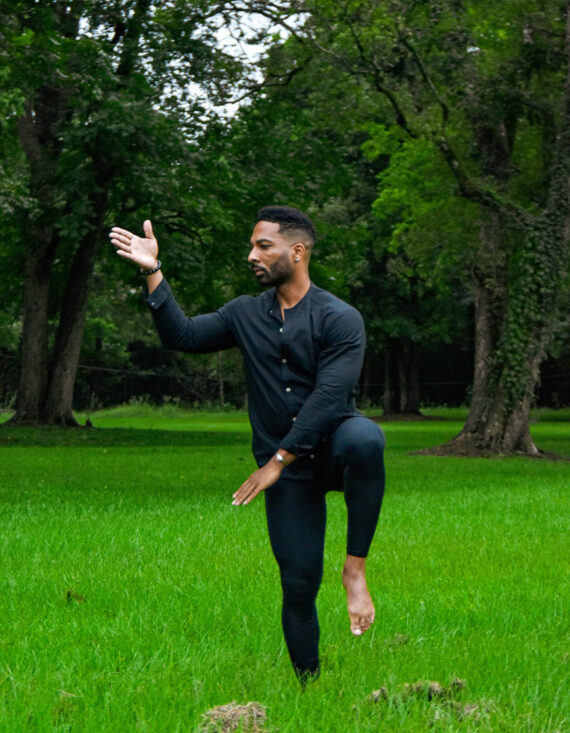 illustration from Birmingham Museum of Art
illustration from Birmingham Museum of Art
Mindful Movement: How Yoga and Tai Chi Can Transform Your Physical and Mental Well-being
In today's fast-paced world, finding moments of peace and balance can feel like an uphill battle. Stress, anxiety, and physical discomfort often become unwelcome companions. Discover how mindful movement practices like Yoga and Tai Chi offer a powerful pathway to enhance both your physical and mental well-being, fostering a deeper connection between body and mind.
Understanding Mindful Movement
Mindful movement goes beyond simply exercising. It's about paying attention to your body's sensations, thoughts, and emotions as you move. It involves bringing awareness to each breath, each stretch, and each posture. This heightened awareness cultivates a sense of presence, grounding you in the present moment and reducing mental chatter.
Key Principles of Mindful Movement:
- Awareness: Paying close attention to your body's sensations and your mental state.
- Non-Judgment: Observing your thoughts and feelings without criticism or judgment.
- Acceptance: Acknowledging your current state without resistance.
- Presence: Focusing on the present moment rather than dwelling on the past or worrying about the future.
- Intention: Approaching movement with a specific goal, such as relaxation, stress reduction, or increased flexibility.
Yoga: Uniting Body, Mind, and Spirit
Yoga, originating in ancient India, is a multifaceted practice encompassing physical postures (asanas), breathing techniques (pranayama), and meditation. It's a holistic system designed to promote physical health, mental clarity, and spiritual growth. The benefits extend far beyond increased flexibility and strength; it's a powerful tool for stress management and self-discovery.
Benefits of Yoga for Physical Well-being:
- Increased Flexibility and Balance
- Improved Strength and Endurance
- Pain Relief (Back pain, neck pain, arthritis)
- Improved Posture
- Enhanced Respiratory Function
Benefits of Yoga for Mental Well-being:
- Stress Reduction
- Anxiety Relief
- Improved Mood
- Increased Self-Awareness
- Enhanced Focus and Concentration
Types of Yoga:
- Hatha Yoga: Emphasizes physical postures.
- Vinyasa Yoga: Links movement with breath.
- Ashtanga Yoga: Rigorous, structured sequence of poses.
- Yin Yoga: Slow-paced, focuses on deep connective tissues.
- Restorative Yoga: Gentle, uses props for relaxing poses.
Tai Chi: The Art of Moving Meditation
Tai Chi, originating in ancient China, is a martial art evolved into a gentle, flowing exercise. It involves slow, deliberate movements performed in a meditative state. Often described as “meditation in motion,” it combines physical activity with mental focus and relaxation, accessible to all ages and fitness levels.
Benefits of Tai Chi for Physical Well-being:
- Improved Balance and Coordination
- Increased Strength and Flexibility
- Cardiovascular Health
- Pain Relief (Arthritis, fibromyalgia)
- Improved Sleep
Benefits of Tai Chi for Mental Well-being:
- Stress Reduction
- Improved Mood
- Enhanced Cognitive Function
- Increased Self-Esteem
- Social Connection
Key Principles of Tai Chi:
- Relaxation
- Slow Movement
- Circular Movement
- Balance
- Coordination
Yoga vs. Tai Chi: Which is Right for You?
Both offer a wide range of benefits but differ in approach and intensity. Yoga typically involves holding static poses, while Tai Chi involves continuous, flowing movements. Yoga can be more physically demanding, while Tai Chi is generally gentler. The best choice depends on your individual needs and preferences.
Consider Yoga if:
- Improve flexibility and strength
- Enjoy holding poses and stretching
- Looking for a more challenging workout
- Interested in the spiritual aspects
Consider Tai Chi if:
- Want a gentle, low-impact exercise
- Prefer continuous, flowing movements
- Looking for balance and coordination practice
- Interested in the martial arts origins
Try both to see which resonates more. You may enjoy incorporating both into your routine.
Getting Started with Yoga and Tai Chi
Start slowly and gradually increase intensity and duration. Consider a class with a qualified instructor or use online resources.
Tips for Beginners:
- Consult with your doctor before starting.
- Find a qualified instructor for guidance.
- Start slowly and listen to your body.
- Be patient and create a consistent practice.
- Find a supportive community.
Integrating Mindful Movement into Daily Life
Incorporate mindful movement principles into your daily life for greater awareness and well-being.
Ways to Integrate Mindful Movement:
- Mindful Walking: Pay attention to the sensations of your feet.
- Mindful Breathing: Take deep breaths throughout the day.
- Mindful Stretching: Incorporate gentle stretches.
- Mindful Posture: Be aware of your posture.
- Mindful Movement Breaks: Take short breaks to move.
The Transformative Power of Mindful Movement
Yoga and Tai Chi are powerful tools for transforming your physical and mental well-being. By cultivating awareness, presence, and acceptance, these practices can help you reduce stress, improve your mood, enhance cognitive function, and foster a deeper connection with yourself and the world.
Call to Action
Ready to experience the benefits? Find a local studio or class today! Share this article and encourage others to explore the transformative power of Yoga and Tai Chi. Let us know your experiences in the comments below!
Published on March 22, 2025
reference: Various Article on internet
Gema
Wordsmith and content writer passionate about creating high-quality content that informs, entertains, and inspires. Let me bring your brand's story to life.
All stories by : Gema

0 Comments